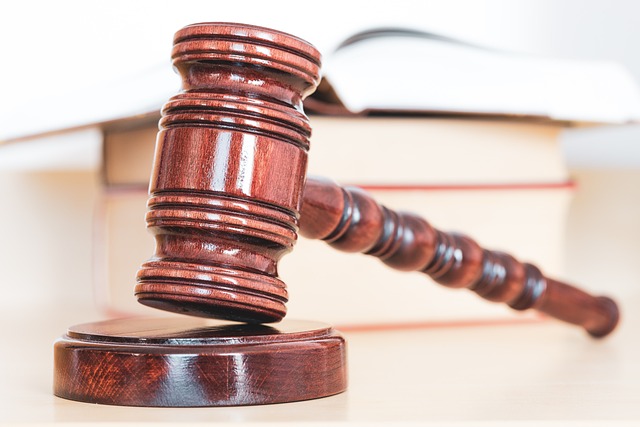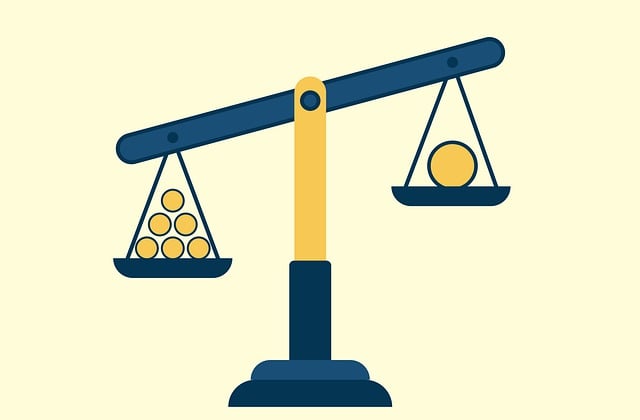C-Level investigations, focusing on top executives, require a deep understanding of evidence gathering and presentation, as demonstrated by notable criminal justice examples. From financial records to digital forensics (Examples of Evidence in Criminal Trials), these techniques expose intricate networks in business, politics, and philanthropy. In criminal trials, evidence like fingerprints, DNA, witness testimonies, and surveillance footage is vital for fair outcomes. Digital age advancements have reshaped investigations, making digital evidence crucial in white-collar crime cases. Skilled forensic experts analyze physical and digital footprints (Examples of Evidence in Criminal Trials) to provide irrefutable proof in court. Strategic approaches, as seen in successful case studies involving global corporations and digital forensics, ensure justice delivery and community safety through effective use of Examples of Evidence in Criminal Trials.
In today’s complex legal landscape, C-level investigations are crucial for unmasking corporate fraud and criminal activities at the highest executive levels. This comprehensive guide delves into the intricate world of these high-profile cases, offering a detailed overview from initial understanding to case studies showcasing successful strategies. We explore key aspects such as evidence collection, digital forensics, and the role of physical evidence in criminal trials, highlighting essential techniques with real-world examples.
- Understanding C-Level Investigations: An Overview of High-Profile Cases
- The Role of Evidence in Criminal Trials: Types and Importance
- Uncovering Digital Footprints: Cybercrime and Cybersecurity Investigations
- Forensics in Action: Physical Evidence Collection and Analysis Techniques
- Case Studies: Successful C-Level Investigation Strategies and Lessons Learned
Understanding C-Level Investigations: An Overview of High-Profile Cases

C-Level investigations refer to high-profile inquiries involving top-tier executives and decision-makers in various sectors, including business, philanthropy, and politics. These cases are marked by their complexity, sensitivity, and significant impact on both individuals and wider communities. Understanding successful C-level investigations requires a look at notable examples from the criminal justice system, where robust evidence plays a pivotal role.
Delving into high-stakes cases reveals the importance of meticulous gathering and presentation of evidence in criminal trials. From financial records to digital forensics, examples of evidence in criminal trials highlight how investigative techniques can navigate the intricate web of business dealings, political campaigns, and charitable organizations. This comprehensive approach ensures that every stage of the investigative and enforcement process is thoroughly explored, ultimately leading to fair outcomes in these challenging cases.
The Role of Evidence in Criminal Trials: Types and Importance

In criminal trials, evidence serves as the cornerstone upon which verdicts are built, playing a pivotal role in establishing guilt or innocence. It’s crucial for achieving extraordinary results for his clients, ensuring fair and just outcomes. Examples of evidence in criminal trials include tangible items like fingerprints, DNA samples, and physical objects related to the crime scene. These can provide concrete links between the accused and the alleged offense, significantly strengthening a case. Additionally, witness testimonies offer firsthand accounts, offering insights into what occurred. Documentation, such as surveillance footage or medical records, also serve as vital pieces of evidence, providing visual or written proof that corroborates other aspects of the case.
Beyond these, circumstantial evidence, though not always direct, can be powerful in weaving a compelling narrative. This includes patterns of behavior, alibis, and any indirect factors that might suggest guilt or innocence. Ultimately, the type and quality of evidence presented determine the strength of a criminal case, with the goal being to avoid indictment through a robust and honest presentation of facts for his clients.
Uncovering Digital Footprints: Cybercrime and Cybersecurity Investigations

In today’s digital era, the landscape of investigations has evolved significantly with the rise of cybercrime. Uncovering digital footprints has become a critical aspect of both cybersecurity and criminal proceedings. As technology advances, so do the methods employed by cybercriminals, making it imperative for investigators to stay ahead of the curve. Digital evidence plays a pivotal role in numerous successful prosecutions, providing insights into criminal activities that once relied solely on physical remnants. This shift is particularly evident in white-collar defense cases involving complex economic crimes, where digital trails offer irrefutable proof.
By examining electronic devices, network logs, and online communications, investigators can gather compelling evidence. For instance, in financial fraud cases, forensic analysis of digital data can reveal unauthorized transactions, altered records, or suspicious patterns, serving as powerful examples of evidence in criminal trials. These technological advancements have proven to be game-changers in securing winning challenging defense verdicts for white-collar defendants facing charges related to economic crimes.
Forensics in Action: Physical Evidence Collection and Analysis Techniques

Forensics plays a pivotal role in modern investigations, with physical evidence collection and analysis techniques serving as powerful tools to unravel mysteries and ensure justice. This process involves meticulous procedures to gather and examine items that can speak volumes about an incident or crime scene. For instance, in criminal trials, examples of evidence include fingerprints, DNA samples, ballistics data from firearms, and digital footprints left by cybercriminals. These tangible pieces of information are crucial for connecting suspects to the scene, establishing timelines, and providing irrefutable evidence in court.
Skilled forensic experts employ advanced tools and methods to extract and interpret these physical clues across all stages of the investigative and enforcement process. From initial on-site examinations to laboratory analysis, every step is meticulously documented and executed. This ensures that evidence is handled correctly, maintaining its integrity and admissibility. By achieving extraordinary results through rigorous forensics, respective businesses and law enforcement agencies can deliver justice, protect communities, and foster a safer environment.
Case Studies: Successful C-Level Investigation Strategies and Lessons Learned

Successful C-level investigations require a strategic approach and tailored tactics, as demonstrated by several notable case studies. These examples offer invaluable insights for organizations navigating complex legal scenarios. One prominent example involves a global corporation accused of white-collar crimes, where an unprecedented track record of evidence collection played a pivotal role in achieving a complete dismissal of all charges. The strategy focused on meticulous document analysis and witness interviews, providing a robust defense that ultimately prevailed in court.
Another successful investigation highlights the importance of digital forensics. By examining emails, financial records, and deleted data, investigators uncovered compelling examples of evidence in criminal trials, leading to a significant victory for the organization’s leadership. This case underscores the value of proactive legal strategies and the necessity of preserving digital footprints as robust forms of evidence.
C-Level investigations, encompassing a range from cybercrime to forensics, have evolved significantly. By understanding key concepts, leveraging digital footprints, and employing robust evidence collection techniques, professionals can navigate complex cases effectively. The case studies presented offer valuable insights into successful strategies, highlighting the importance of comprehensive evidence analysis in achieving justice. Incorporating these lessons learned ensures a more prepared and effective approach to high-profile investigations, utilizing both traditional and cutting-edge methods, such as examining examples of evidence in criminal trials for conclusive outcomes.






